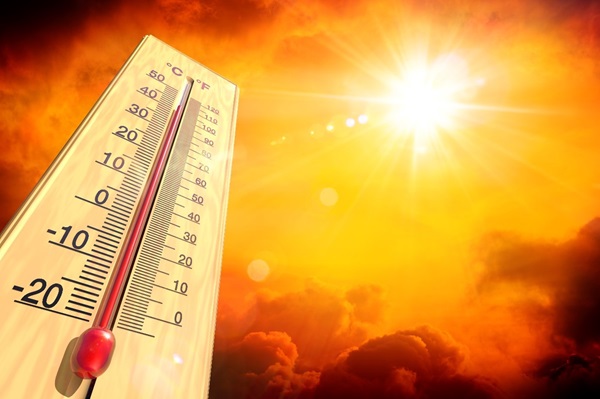 Credit: Romolo Tavani
Credit: Romolo Tavani
According to weather forecasts, 2024 brings new heat records; in southern and south-eastern Europe, temperatures are expected to reach 46 degrees Celcius.
Authorities in Italy have raised the alert level to red due to dangerous weather conditions in seven cities, including the populous capital Rome. Germany is also expected to feel the effects of this heatwave. Cities will be hit particularly hard, as they can be up to 15 degrees hotter than their surrounding areas due to the high level of heat-retaining materials used to seal them. “This so-called heat island effect is extremely detrimental to health. Dehydration, cardiovascular problems and breathing difficulties are particularly hard on older people and those with health problems,” said Gregor Grassl; as Associate Partner and Head of Green Urban Development at the consultancy Drees & Sommer, he knows what cities can do to combat heat stress.
The good news is that cities and towns are not helpless in the face of the climate crisis. The projects supported by Drees & Sommer in the city of Rastatt in Baden-Württemberg, the Berlin TXL neighbourhood development and the municipality of Dormagen in North Rhine-Westphalia, show which measures are particularly effective.
Five recommendations to counter urban heat islands:
1. Provide sufficient shade
The simplest and cheapest way to protect streets and open spaces from the heat is with trees and other shading elements. Simple methods such as bus stop canopies or benches in the shade allow people to rest when it is very hot. “The tree population in cities is extremely important. Trees not only provide shade, they also cool the air through evaporation,” explained Gregor Grassl. In Rastatt, around 1,000 newly planted trees in the urban area ensure cooler temperatures in summer. They also absorb CO2 and pollutants, produce oxygen, and, in doing so, ensure better air quality.
2. Cool through green façades and unseal surfaces
Unsealing also plays an important role for a better microclimate. “Squares and paths do not necessarily need to be made of asphalt. Gravel surfaces like in beer gardens or grass pavers for parking lots reduce the heat effect and are even cheaper than asphalt,” said Grassl. “Unfortunately, many areas such as traffic islands are still being sealed instead of planting flower meadows there, which could help to promote biodiversity.”
In addition to trees and green strips, the greening of cities also includes vertical green façades, such as those found on the Drees & Sommer OWP12 office building in Stuttgart. Here, the green façade covers an area of more than 100 square metres over three stories with a height of 12 metres. As a result, the building heats up less, and the plant walls filter pollutants from the air and insulate noise. Another plus is that the greenery provides a habitat for plants and animals, which ensures greater biodiversity.
3. Use bright surfaces with a high albedo
In addition to more green spaces, light-coloured, reflective materials counteract the heat in cities. These can reduce excessive heat radiation on hot days. In urban planning, this is known as the albedo effect. Short-wave radiation is reflected and the material does not heat up. The albedo effect achieves particularly positive results in densely built-up areas with large roof surfaces. Light-coloured concrete surfaces, concrete or natural stone paving or gravel-bound surfaces are best suited here. A combination of rough surfaces, porous materials and lighter colours in the paving also ensures lower surface temperature and higher thermal storage capacity. If necessary, surfaces can be lightened by applying a light colour afterwards.
4. Cool at night with low-energy solutions
What many people do not realise is that air conditioning systems exacerbate the heat island effect even further. “Air conditioning systems such as split units are twice as bad for the outside space, as they run exactly when it’s hot. While they cool the interior, they heat up the exterior at exactly the same time due to waste heat. This means that even more cooling is required. It’s a vicious circle,” said Grassl.
It is better to rely on low-tech systems in buildings. This involves installing a lot of storage mass in the building to cool it at night using the outside air. During the day, windows and doors remain closed. “If it gets too warm outside at night, this principle no longer works. So, in future development, buildings that are actually energy-saving and sustainable will also have to be renovated because of climate change,” Grassl noted. As alternatives for natural cooling, underfloor heating can be used relatively easily as cooling floors in summer. One possibility is to cool the water circuit at night and dissipate the heat from the indoor spaces to the outside. It is also possible to use ceilings as cooling surfaces.
At neighbourhood level, so-called low-energy networks make sense as they can be used for both heating and cooling. The way it works ideally is that water is used for cooling in summer and is thus heated. The heated water is then stored. In winter, the warm water is used for heating and cooled down again. This process can even have a positive effect on the overall energy balance in summer.
5. Build higher to counter overheating
“Tower blocks shade each other and protect the apartments from heating up. For this to work, the window areas must not exceed 40 percent. Glass palaces are costly in terms of energy consumption, both in summer and winter, as glass offers poor insulation,” explained Gregor Grassl. Another advantage is that tower blocks generate turbulence and updrafts. This contributes to better ventilation in the neighbourhoods. When used in a targeted manner, they serve to cool down and are comparable to natural landscape elements such as a river, which, in addition to cooling through the water, always acts as a fresh air corridor and a ventilation zone through its movement.
Two sides of the same coin: climate protection and climate adaptation
Gregor Grassl believes climate protection and climate adaptation are two inseparable dimensions of the climate crisis and should not be played off against each other. “We often talk about whether we should make our roofs greener or better equip them with photovoltaic systems. The former is climate adaptation, the latter is climate protection.” Numerous studies show that both can be combined without any problems and that synergies can even result. Photovoltaic modules on green roofs even achieve a higher yield because they work more efficiently due to the cooling of the green roof.
Exposure to heat in urban areas is a major challenge both now and in the future. But it also offers an opportunity to make our cities more liveable, sustainable, and resilient. Targeted action means we can not only reduce heat stress in cities, but also achieve other benefits such as improved air quality, higher energy efficiency, and greater biodiversity.
About Drees & Sommer
As a leading international consulting and project implementation company, Drees & Sommer supports private and public clients in all matters relating to real estate, infrastructure and industry. Drees & Sommer provides all services under the premise of "uniting opposites to create a world we want to live in". Partner-managed since more than 50 years, Drees & Sommer has its headquarters in Stuttgart (Germany) and more than 6,000 employees at 60 locations worldwide. The Luxembourg office was founded more than 20 years ago and has a steadily growing team of currently more than 110 employees.








